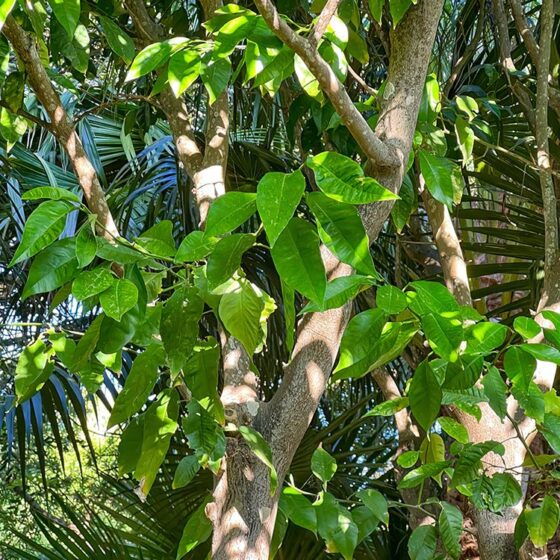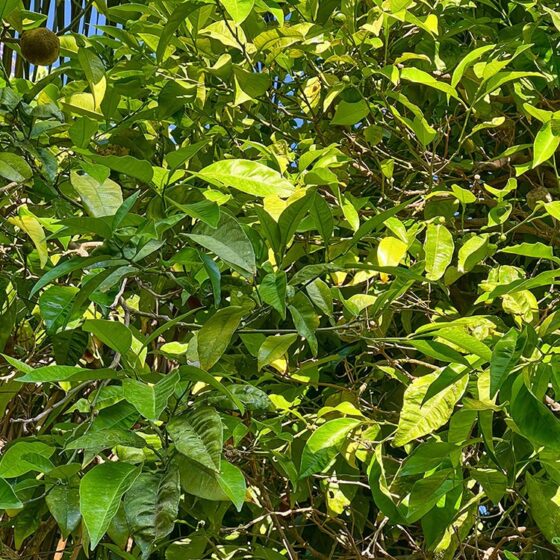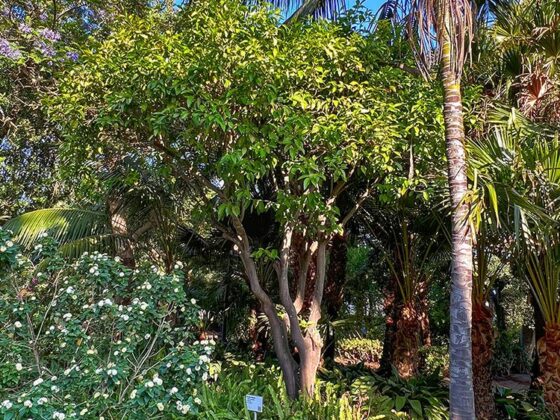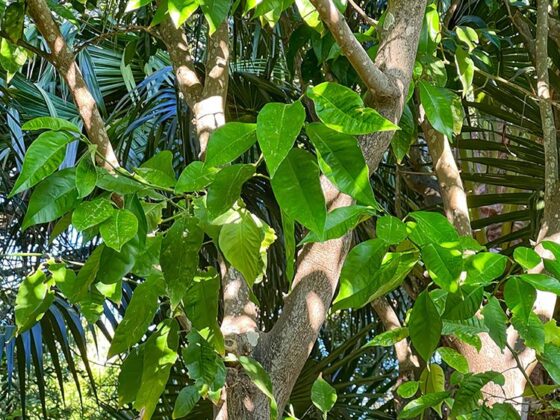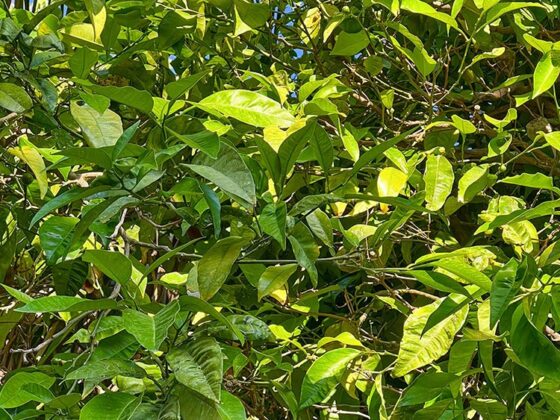Bitter Orange / Sour Orange
Citrus aurantium
Native to Southeast Asia, although it is not known in the wild, and its cultivation has spread thanks to the Arabs throughout the Mediterranean coast since the tenth century. It is believed that its origin is hybrid between Citrus maxima (grapefruit, pomelo) and Citrus reticulata (mandarin).
The name of the genus comes from the Latin Citrus-i, the classic name of citron (Citrus medica). The specific epithet comes from the Latin auratus-a-um = golden, of golden colour, due to the colour of its fruits, which derives from aurum -i = gold, with the suffix indicating similar -atus-ata-um. Its common name alludes to the bitterness of the acid of its fruits.
A small tree that can reach 4-6 m tall, with a rounded crown and green branches. Its leaves are glabrous though you can more frequently find them with spines that measure 2.5-5 cm long, at least in the new shoots. Leaves are unifoliate, its form bring oval to elliptic-ovate, 6-14 x 4-10 cm, with cuneate or a rounded base. You can find an entire or a slightly crenulated margin towards the apex and the apex can be acute or pointed. They are thick in texture, dark green in the midrib and somewhat more pale on the underside, with punctate glands on its surface; very thin veins, which are more visible on the underside. Petiole articulated with the blade, 2-4 cm long, with a broad wing, widened at the top and narrowed at the base. Aromatic flowers.
From Southeast Asia, it was introduced by the Arabs in Europe, where it was used to obtain essences for perfumery and medicine. At the moment, it continues being cultivated in some places for the essence of its flowers and for its acid fruits, which are used in the manufacture of jams and other sweets. It is a species that, thanks to its resistance, has been used as a host or rootstock to graft other citrus, such as lemon, sweet orange or grapefruit. It is often used as an alignment tree on narrow pavements because of its reduced crown that can be easily trimmed. Sometimes it is even used to form hedges. It multiplies easily by seeds.



